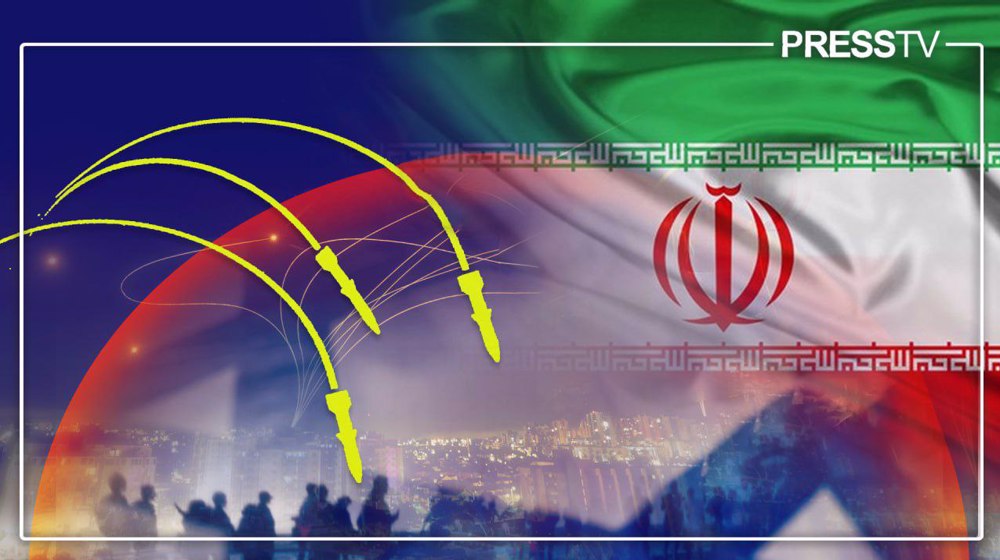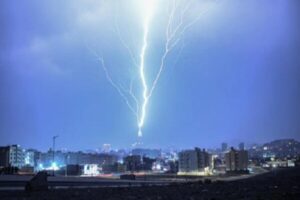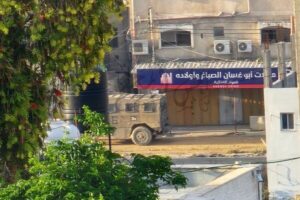By Ivan Kesic
In a stunning exhibition of its phenomenal military prowess, Iran’s Islamic Revolution Guards Corps (IRGC) carried out an unprecedented military operation in response to the Israeli regime’s terrorist attack on the Iranian consulate in the Syrian capital of Damascus on April 1.
The retaliatory strikes came after two weeks of strategic patience and meticulous planning and execution was just perfect, taking the regime and its Western backers by surprise.
The Israeli attack on the Iranian consulate in Damascus had resulted in the martyrdom of Brigadier General Mohammad Reza Zahedi, a senior commander of the IRGC’s Quds Force, his deputy, General Mohammad Hadi Haji Rahimi, and five other military officers.
After the cowardly attack, which breached international law and the Vienna Conventions, Iranian leaders vowed a “decisive response” exercising their right to self-defense.
“In response to the Zionist regime’s numerous crimes, including the attack on the consular section of Iran’s Embassy in Damascus and the martyrdom of a number of our country’s commanders and military advisors in Syria, the IRGC’s Aerospace Division launched tens of missiles and drones against certain targets inside the occupied territories,” the IRGC statement noted early on Sunday.
Iran’s foreign ministry in a separate statement warned against further attacks on Iranian soil.
Pertinently, the ‘Operation True Promise’, which was launched just before midnight on Saturday and continued until the wee hours of Sunday morning, left the regime paralyzed.
Here is how it unfolded, with cyber-attacks followed by military strikes.
The Nevatim air base in occupied territories, which houses US F-35 fighter jets used in Tel Aviv’s genocidal assaults on Gaza, has been successfully targeted by Iranian missiles. pic.twitter.com/d8KdxbrQvX
— Press TV 🔻 (@PressTV) April 14, 2024
Cyber attacks
The multiple drone and missile attacks were preceded by a series of hacking attacks on the Zionist regime’s power grid and radar systems, which led to massive power outages.
A major blackout was reported in many districts of Tel Aviv due to the major cyber attack on the electricity infrastructure there, media reports stated.
The Iranian “Cyber Av3ngers” hacking group published a statement claiming responsibility for cutting off electricity in various parts of the occupied territories.
The group stressed that it carried out the cyber attack from the south to the north in response to the Zionist regime’s crimes against the Palestinian people in Gaza.
Earlier in the evening, it was also reported that the Zionist regime’s radars were under a hacker attack, which forced the closure of the airspace over occupied territories.
The Iranian hacker group Hanzaleh Bammad claimed responsibility for it, publishing images and stating that their action was a response to the Israeli regime’s recent attack on the Iranian consulate.
Waves of drone attacks
At around 11:00 PM Iran time, the IRGC aerospace division officially launched a retaliatory military operation against the Zionist regime, carrying out at least four waves of drone attacks.
The first wave included dozens of Shahed-136 kamikaze drones, estimated at about 100 pieces, whose swarm was also recorded by private camera footage in Iran and Iraq.
Shahed-136 is a delta-wing shaped, low-observable and low-signature loitering munition with a range of 2,000 km that carries a warhead of 50 kg.
This type of unmanned aerial vehicle (UAV) was previously used to destroy the headquarters of terrorists in the northern region of Iraq, but this is the first time Iran used it in large numbers and with a range of over 1,000 kilometers.
Shahed-136 uses an Iranian-made piston engine and has a speed of about 200 km/h, which means that it needed a flight of about five hours before impact.
After the first wave, three more wave attacks followed at intervals of about half an hour, and it is estimated that a total of 400 to 500 drones were launched.
Cruise & ballistic missile salvos
The next step in the retaliatory military operation was the launch of a series of cruise and ballistic missiles, which were reportedly accompanied by simultaneous drone and missile strikes by the Axis of Resistance groups from Iraq, Yemen and Lebanon.
It has not yet been officially announced which missile models were involved in the hugely successful operation, although at least some of the ballistic missiles were reportedly Kheibar Shekan.
Kheibar Shekan is a solid-fuel medium-range ballistic missile with a range of 1,450 km and a half-ton warhead, notable for high maneuverability in the landing stage.
There are also reports that the Fattah hypersonic missiles were also used, which is difficult to assess based on the available night footage because their terminal velocity is similar to the latest ballistic missiles, as well as whether and how much they maneuvered.
Targeted sites
Tehran has not announced the target locations, and although the Zionist authorities have appealed to the population not to publish videos of Iranian strikes, dozens of them have been leaked on the Internet, testifying to extensive and precise hits.
As correctly stated in a previous Press TV website analysis, the main targets were the military bases of the Zionist regime, from the Golan Heights to the Negev desert.
Scott Ritter, a US military expert, stated on the X platform (formerly known as Twitter) that at least seven hypersonic missiles had hit Nevatim Air Base and none was intercepted.
This air base is located in the Negev desert and houses the Zionist F-35 planes that were used in the terrorist attack on the Iranian consulate in Damascus.
Several private camera footage, taken from a distance, testify to a series of fast and powerful hits by ballistic or hypersonic missiles, once again proving the shortcomings of the much-exaggerated Israeli air defense (military) systems, including the so-called Iran Dome.
The air base also houses F-15 and F-16 units, as well as large warehouses of expensive multibillion-dollar weapons, so it was one of the primary targets of the precise Iranian strikes.
The footages confirm that Ramon Air Base, another major base in the Negev, was also hit by multiple missiles, leaving a trail of destruction.




